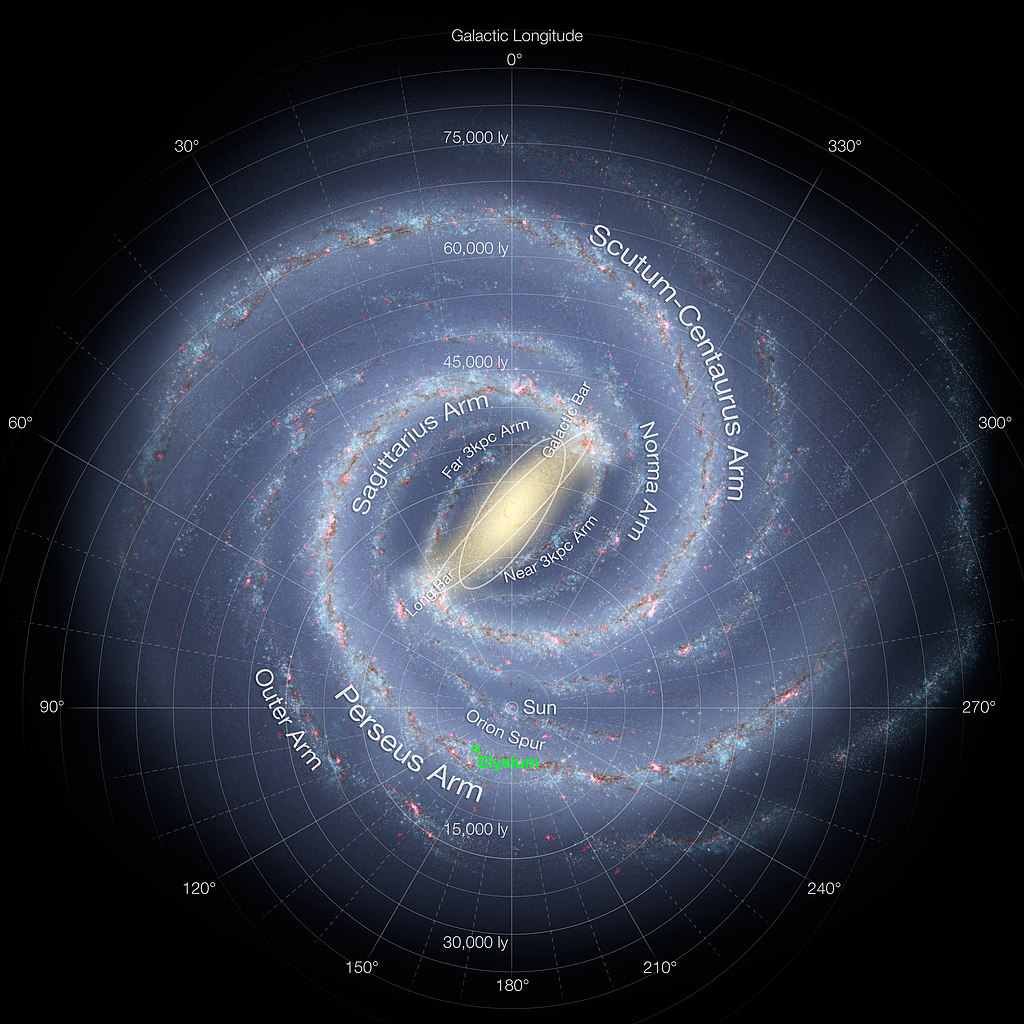Elysian Star Cluster
The final resting place of the heroic and the virtuous, huh? I guess the Founders weren't very humble back in the day, were they?
The Elysian Star Cluster, simply referred to as Elysium, is an open star cluster located in the Milky Way's Perseus Arm and primarily made of middle-aged G-type and K-type stars. It consists of a roughly spherical region, 97 lightyears in diameter, and contains 1 471 stars. Most of these stars are between 3.5 and 7 billion years old, indicating that Elysium is most likely the inner core of a much older cluster, which has since then expanded to a scale that remains unknown so far.
Astronomers believe that Elysium has been entirely discovered, and previous expeditions have explored the vast majority of Elysium's planetary systems. Of all the discovered and explored systems, however, only eight have been found hosting a planet capable of permanently sustaining human life. While official expeditions are no longer underway, numerous private explorers have set out to discover and explore new systems of interest beyond Elysium, so far with little success.
History
It is estimated that humans arrived in Elysium roughly 37 000 years after leaving Earth, when the UNS Ulysses reached Auriga. With no other choice but to resettle, Auriga became the new home of humanity, and studies of the nearby stars begun once the first cities were established. Proper exploration of Elysium only began in the early 130s, however, eventually leading to the discovery of the Ceryx system. Since then, astronomers and scientists have attempted to pin-point the location of the Solar System, and it is now widely believed to be approximately 7 418.6 lightyears away, far beyond the range of modern interstellar travel.
Most stars in Elysium have been found to be of no interest, either having no planets or very few of them, and most of those being entirely unsuited for human life. As a result, the vast majority of Elysium is unclaimed and devoid of life, waiting for the day humanity will find a use for it. Still, beyond the Aurigan system, two other planetary systems have been settled by major nations: Ceryx, in 169, and Medea in 215. Together, these three systems are home to more than 90% of all mankind, with most of their population concentrated on their class V planets. So far, no other class V planet has been found, making them among the most important locations in Elysium.
97 lightyears
Estimated age
7.3 billion years
Number of stars
1 471
Total population
2 895 513 427 (382 est.)
Factions
Vestan Federation
Enodian Ascendancy
Elysian Security Organization
Unity Concord
Non-Aligned Nomad Fleets
Criminal Underworld




Comments